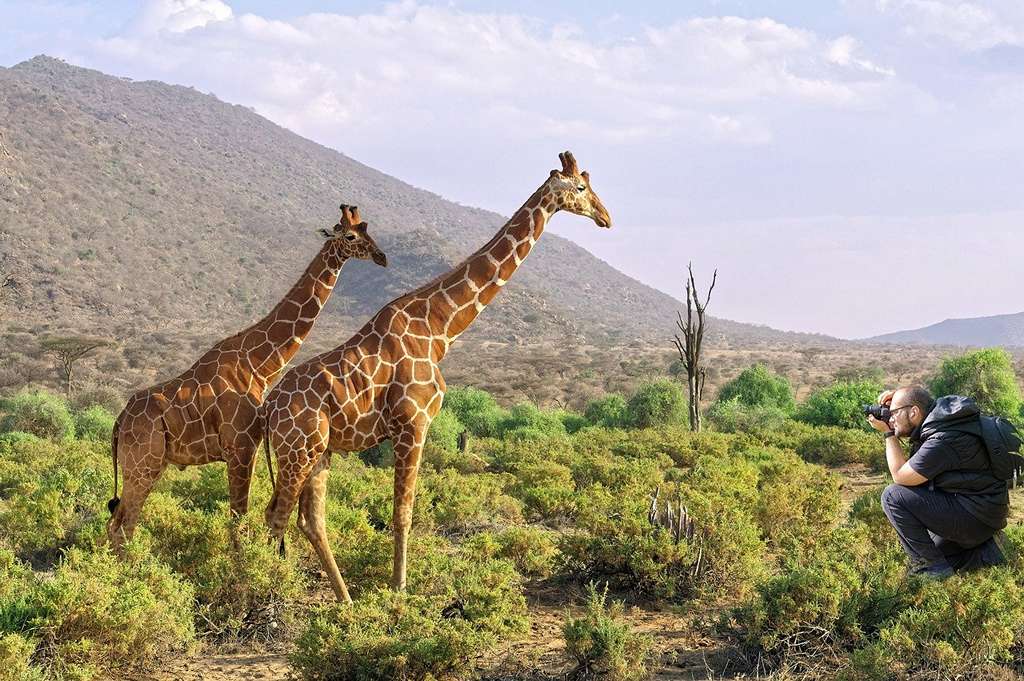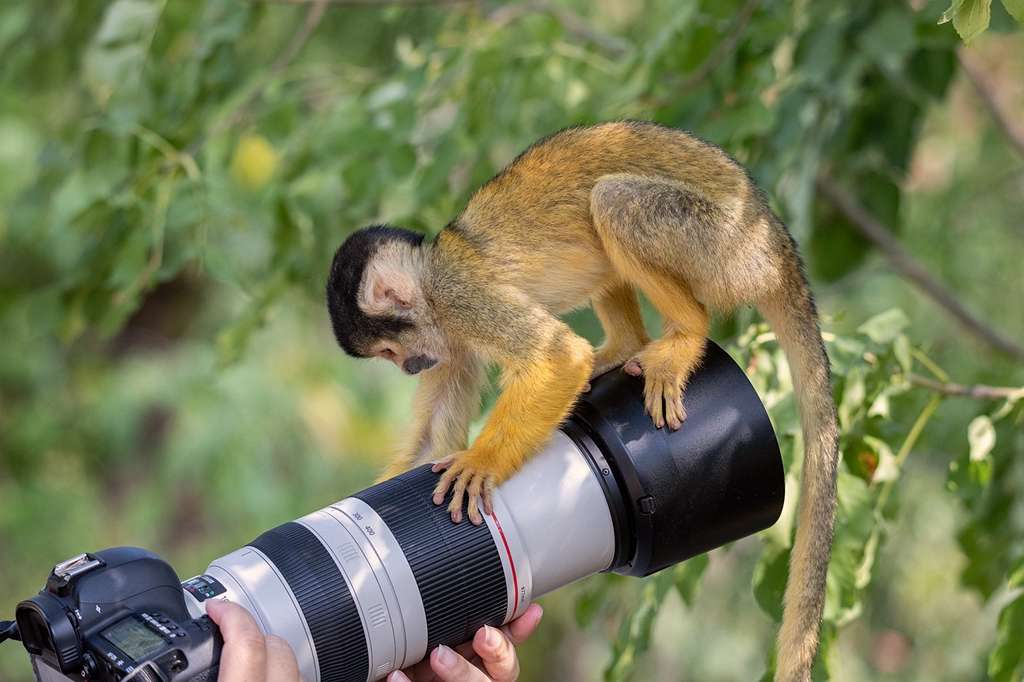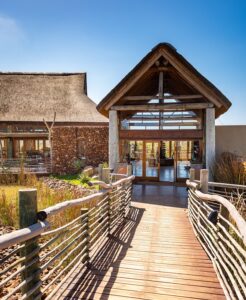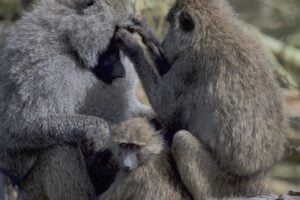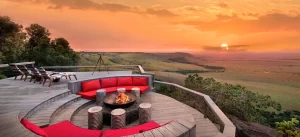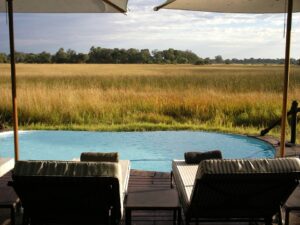Ultimate Guide to Luxury Safari Photography in Africa 2024 – 2025
If you are reading this, then you are possibly planning for an exhilarating adventure filled with wildlife, opulent accommodations and a touch of African Hospitality? Right!
Kenya, a land renowned for its awe inspiring landscapes and captivating wildlife is calling out to you. Get ready to embark on a experience where you can capture the perfect photograph of the majestic “Big Five” and beyond. In this guid, we try our best to show you around Kenyas luxury offerings tailored specifically for wildlife photography enthusiasts. So grab your camera. Let us immerse ourselves in the realm of Kenyan safaris!
Understanding Luxury Safaris, in Africa
Luxury safaris in Africa go beyond roughing it in the wild. They seamlessly blend the excitement of wildlife photography with the comforts of a 5 star hotel. Here’s what you need to know;
Accommodations: Picture yourself waking up in a lodge or a tented camp, enveloped by the symphony of natures sounds. These accommodations offer the best of both worlds. The enchantment of wilderness and modern amenities that ensure your comfort.
Safari Vehicles: Gone are the days of cramped cars, on these safaris. Designed safari vehicles boasting roofs guarantee unobstructed views of wildlife. Additionally they provide seating arrangements, air conditioning and more.
Wildlife Photography: Don’t worry if you don’t have a professional grade camera; these safaris offer guides and high quality camera equipment. They will assist you in capturing those wildlife photographs.
Dining: Prepare your taste buds, for meals prepared by chefs.. Imagine this – enjoying your meal under the sky or next to a watering hole. That’s what we call a dining experience with a view!
Activities: In addition to wildlife photography you can partake in guided nature walks visit villages or even take an exhilarating hot air balloon ride over the expansive gameparks below.
Photography safaris; An Unforgettable Experience

Discover the beauty of Africa through your camera lens! Join us on an exciting African photography safari, where you’ll capture breathtaking moments and explore the wild like never before.
Imagine embarking on a thrilling adventure, where your camera becomes your closest companion, and the breathtaking landscapes of Kenya serve as your muse. Kenyan photography safaris offer you a unique opportunity to capture the stunning beauty of this East African gem. It’s not just a vacation; it’s an unforgettable experience.
Best Time for a Photography Safari to Africa
What are the best times of year for photographers to visit Africa
Africa offers incredible photo opportunities year-round, but certain seasons shine brighter for specific experiences:
- South Africa (Jan-March): Dramatic skies! Lush landscapes explode with color, newborns abound, and thunderstorms paint the sky before the golden hour.
- Botswana (April-May): Witness the Okavango Delta’s transformation! Floods create stunning reflections, while open landscapes make wildlife spotting easier.
- Uganda (Late May – Early June): Gorilla trekking at its best! Dry season means easier hikes, plus diverse wildlife in multiple stunning parks.
- Zimbabwe (May-Aug): Combine walking safaris with Victoria Falls at peak flow. Ideal for active photographers and those seeking varied scenery.
- Zambia (April-May): Be among the first back as camps reopen! Enjoy fresh landscapes and lower crowds in renowned parks like South Luangwa.
- Kenya & Tanzania:
-Dry Season (Mid-June – Oct): Prime viewing! Thin vegetation, vibrant birdlife, and easier to find those iconic animals.
-Great Migration (Late June-Sept): Witness the Mara River crossings. Time it outside peak holidays for fewer crowds.
-Short Rains (Nov-Dec): Lush landscapes, minimal disruption.
-Birth Season (Jan-Feb): Adorable newborns alongside dramatic green scenery.
Essential Items to Pack for photography safari
Camera Gear – Your Creative Arsenal
- Camera; You don’t need a spaceship. A high resolution camera with autofocus can make all the difference.
- Lens; A trusty telephoto lens with a length of 300mm or more will be your companion in wildlife photography.
- Tripod; Keep things steady; camera shake can ruin the sharpness of your wildlife shots.
- Memory Cards; Bring plenty along as animals aren’t usually patient when you need to space.
- Batteries; Extra batteries are crucial; wildlife doesn’t wait for your camera to recharge.
- Cleaning Kit: Dust is your enemy, be prepared to fight it.
Safari Survival Kit
- Sun Protection: Sunglasses, hat, high-SPF sunblock.
- Smart Layers: Light, breathable clothes for heat, layers for cool mornings/evenings. Think neutral colors.
- Insect Repellent: Depending on location, this is vital.
- Medications: All your routine ones, PLUS any region-specific needs (malaria, etc.), and a small first-aid kit.
Travel Docs – Don’t Leave Home Without Them
- Passport + Copies: Keep the originals safe, but have copies handy.
- Money Matters: Credit cards, cash, but let your bank know you’re traveling.
- Insurance Proof: Medical and travel insurance for peace of mind.
Handy Extras
- Flashlight: For general use and the occasional night photography experiment.
- Red-Light Headlamp: Essential for navigating at night without disrupting wildlife.
- Bean Bag: Improvised camera support on bumpy game drives.
- Multi-tool: You never know when it’ll save the day!
Protecting Your Images
- Camera Covers: Keep the dust at bay.
- Extra Cleaning Supplies: Lenses and filters need love too!
- Backup Drives: Don’t lose a single precious photo.
- Chargers & Cables: Keep everything powered up and ready.
African Safari Photography Tips to Capture Wildlife Moments
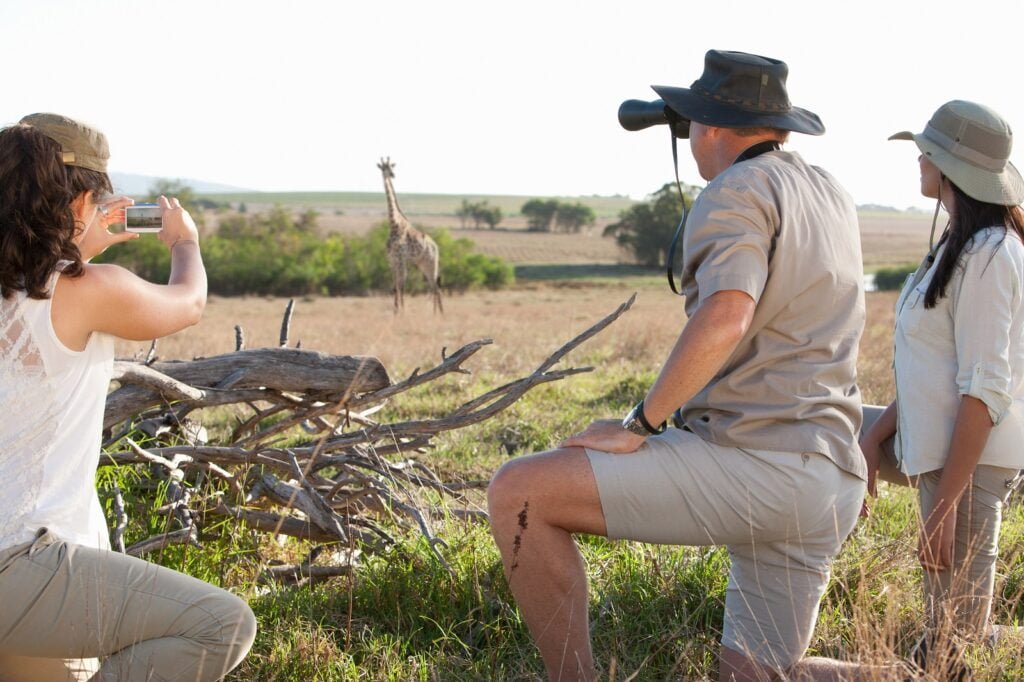
Be Prepared; Wildlife photography is like attending a surprise party; you never know when exciting action will unfold before you.
Use Settings; High shutter speed freezes motion wide aperture creates beautiful background blur and low ISO reduces noise in your shots.
Focus on the Eyes; The eyes act as windows to an animals soul; ensuring they are sharp adds depth and connection, to your images.
Consider Lighting Conditions; Early mornings and late afternoons offer light that enhances your photos. Midday sun tends to be less favorable.
Please remember to show respect, towards animals as they’re the focus here. Avoid being intrusive like a paparazzo. Allow them to live their lives undisturbed.
While on an African Safari, it’s worth being patient as it pays off in the end. Wait for that moment to capture your shot and keep in mind that even animals have their days when they don’t look their best!
Best Camps for Photography Safari in Kenya.
One such remarkable place is Mahali Mzuri, which was awarded the title of hotel in the world in 2022. Situated within the Olare Motorogi Conservancy this exclusive safari camp allows you to get up close with the Big Five and other fascinating wildlife. Just imagine; twelve tents with decks and an infinity pool – it’s like glamorous camping taken to another level!
Another noteworthy choice is Cottars 1920s Safari Camp located within Maasai Mara National Reserve. This elegant camp boasts nine tents along with a lounge dining area and a spa facility. You can partake in game drives guided walks through nature trails or even visit Maasai villages for an immersive cultural experience alongside luxury.
For those seeking a boutique getaway, Castel Mara Camp situated on the Siana Conservancy a perfect escape. These luxury tents are only 6 in number offering the privacy and exclusivity for those that need to be away from crowds.
That’s the beginning of the amazing options Kenya has in store for luxurious safari accommodations. Whether you’re a fan of infinity pools or prefer your plunge pool Kenya caters to all tastes and budgets.
Best clothing recommended for a photographic photographic safari
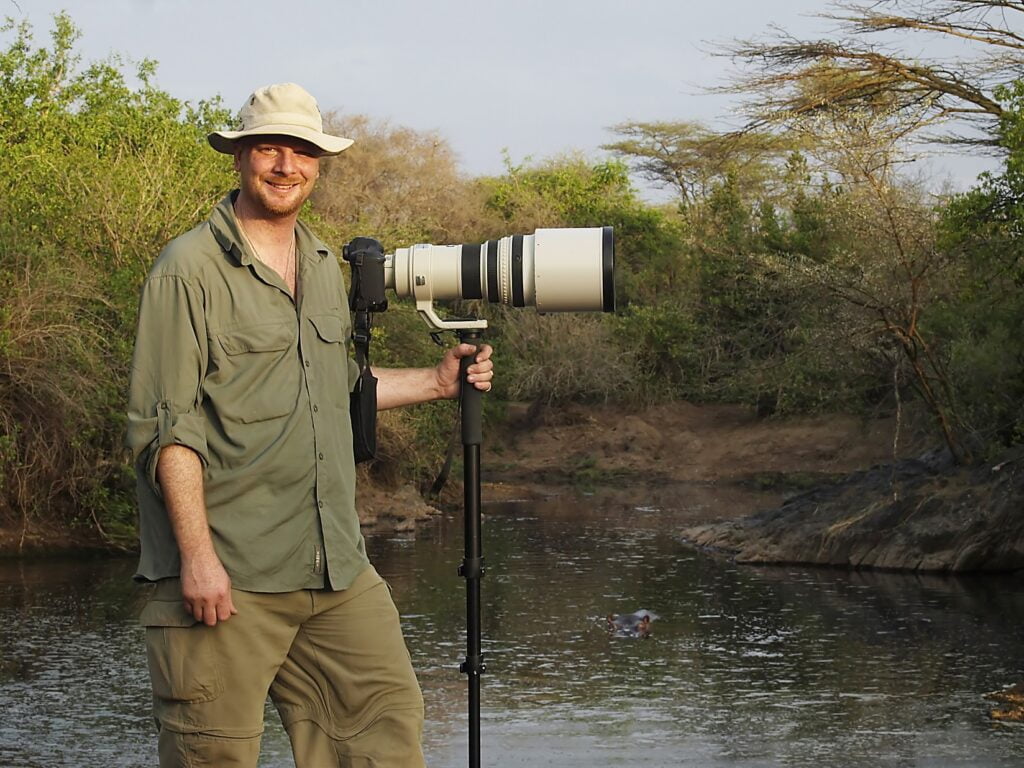
Choose clothes that help you blend in, stay comfortable, and protect yourself from the elements.
Here’s your checklist:
- Earth Tones are Key: Khaki, green, brown, and similar neutrals help you disappear into the scenery. This lets animals act naturally, leading to better photo opportunities.
- Comfort for the Win: Lightweight, breathable fabrics keep you cool. Look for pants and shirts that let you move freely to capture those unexpected shots.
- Layers for Changing Temps: Mornings and evenings can be chilly – pack a light jacket or sweater.
- Sun and Bug Defense: Long sleeves and pants offer double-duty protection. Look for fabrics with built-in sunblock and insect repellent.
- Hat Trick: A wide-brimmed hat with a chin strap protects your head from the sun and stays put on windy game drives.
- Don’t Forget Your Feet: Closed-toe shoes are best for unpredictable terrain and the occasional walking excursion.
Bonus: Add sunglasses, sunscreen, insect repellent, and a scarf (to block dust) to your packing list.
Unlock Your Safari Photo Potential: Why Specialist Vehicles are a Must
Forget standard game drives! Dedicated photographic vehicles transform your safari into a wildlife photographer’s dream. Look for these features:
Unobstructed Views: Open-sided designs give you a 360-degree panorama, ensuring you never miss a shot.
Stable Shooting: Sliding gimbal heads offer smooth movement and rock-solid support for those long lenses.
No Tripod? No Problem! Bean bags cushion your camera gear, letting you ditch bulky tripods for easier maneuvering.
Protect Your Gear: Dustproof compartments keep your precious camera equipment safe and ready for action.
Level Up: Some camps offer pro-level add-ons like camera bodies, telephoto lenses, and specialized camera arms.
Take Your Skills Further: Look for camps that host photographic workshops led by professional photographers – the perfect way to hone your craft.
Can Your Camera Gear Make the Trip? Luggage Restrictions for Safari Photography
Don’t let baggage restrictions ruin your dream shots! Here’s what you need to know:
Camera Essentials: DSLR, long zoom lens, tripod, beanbag, cleaning supplies, ample batteries, and memory cards are a must.
Protect Your Investment: Sturdy dust-proof cases and dedicated camera bags safeguard your equipment on the journey.
Know Your Limits – and Your Options:
- Airline Rules: Before you pack, check your airline’s baggage allowance AND any specific rules for camera gear.
- Plan B: Be prepared for extra fees, or be willing to ship some gear ahead to your lodge. Some airlines even let you book a seat for your gear!
- Travel Light: If possible, consider renting specialized lenses or equipment at your destination to cut down on baggage.
- Protect Your Valuables: Always carry cameras, lenses, and laptops in your hand luggage. That way, your most important gear is with you at all times.
A little planning goes a long way. Research your airline upfront, pack strategically, and don’t be afraid to get creative to ensure your camera gear makes the trip!
Where can I find photo editing equipment on Safari
“Don’t let your best shots languish! Stay on top of your photo editing even while in the heart of the bush. Here’s how:
Rent-a-Rig: Need a powerful laptop? Some lodges offer rentals, letting you edit on the spot without hauling your own gear.
Your Portable Studio: Prefer your own setup? Bring a capable laptop or tablet loaded with your favorite editing software (hello, Lightroom and Photoshop!).
The Cloud is Your Friend: Online editing tools let you work your magic from any device with internet access. Perfect for lighter travel.
**Pro Tip: Always check with your lodge! They may have resources or recommendations you haven’t considered.
Bringing a drone for Safari Photography
Yes, it is possible to bring a drone for a safari in certain locations, but there are strict regulations and considerations to keep in mind. In general, drones are not permitted in national parks in countries like South Africa, Botswana, and Tanzania due to concerns about wildlife disturbance and safety.
However, some private reserves and concessions may allow drones for photography or filming purposes, with the requirement to hire a separate vehicle to avoid disturbing other guests.
- National Parks: Mostly Off-Limits. Most African national parks strictly ban drones to protect wildlife and the wilderness experience.
- Private Reserves: Maybe. Some allow drones with special permits, often requiring you to hire a separate vehicle.
- Rules are Strict. If you plan to bring a drone, research regulations THOROUGHLY for your specific destination. Be prepared for complex permit processes, fees, and limits on where/when you can fly.
- Do Your Homework: Contact the relevant Civil Aviation Authority and park management well in advance of your trip.
Expect Paperwork: You likely need permits and may need to be certified as a drone pilot.
Height Limits: Most areas restrict drone flights to 400 feet above ground.
Stay Away: Regulations often ban flying near wildlife, other tourists, airports, and sensitive sites.
Think Twice: Even where it’s permitted, consider if using a drone will detract from your safari experience and potentially disturb others.
Frequently Asked Questions
While there aren’t restrictions on the SIZE of your camera equipment, airlines do have weight limits. Here’s how to ensure your gear makes the trip:
Know Your Airline’s Rules: Research their baggage policies before you pack to avoid surprises at the airport.
Pack Light, Shoot Big: A long lens (400mm+), a mid-range zoom (70-200mm), and a wide-angle (24-70mm) cover most safari shots.
Cameras, lenses, and laptops are safest in your hand luggage.
*Options for Extra Baggage: Explore booking an additional seat on internal flights, chartering a plane, or renting gear at your destination to lighten your load.
“To truly capture the magic of a photo safari, plan for at least three nights at each camp. Think of it as unwrapping a gift: the longer you stay, the more treasures you discover. Less time rushing between locations means more time soaking in the atmosphere, bonding with expert guides, and finding those once-in-a-lifetime wildlife encounters. Imagine having the luxury to revisit a stunning location at different times of day, chasing the perfect light for your images. This is the essence of slow travel, and the key to unforgettable photos.”
The charging options for photographic equipment at safari camps in Africa are quite accommodating. Most camps provide facilities to charge batteries and laptops, even in remote tented camps deep in the bush. These facilities often include solar panels, inverters, and plug points to ensure that guests can keep their equipment powered up throughout their stay.
Additionally, some camps may have central charging stations in the camp or offer charging options in the safari vehicles, allowing guests to charge their devices conveniently. It is advisable to bring spare batteries and international adapters to ensure you are prepared for any charging needs during your safari experience
The safari camps that offer photography workshops for guests are:
- Singita Ebony Lodge – Sabi Sands, South Africa
- Singita Boulders Lodge – Sabi Sands, South Africa
- Singita Faru Faru – Serengeti National Park, Tanzania
- Singita Lebombo Lodge – Kruger National Park, South Africa
- Singita Kwitonda Lodge – Volcanoes National Park, Rwanda
- Singita Pamushana – Gonarezhou National Park, Zimbabw
A successful photographic safari depends on strategic packing. Avoid these items to travel light, stay agile, and focus on what matters – stunning images:
Excess Gear: Don’t lug a whole camera store! Prioritize versatile lenses and lightweight equipment.
Impractical Clothing: Comfort is key. Ditch restrictive or hot outfits. Choose breathable, neutral-toned layers for ease of movement.
Flashy Valuables: Leave behind jewelry and items that attract attention. Minimize distractions and potential loss.
Bright Colors: Blend in, not stand out. Earth tones and camouflage help you disappear into the landscape, allowing wildlife to act naturally.
Extra Gadgets: Disconnect and focus on your photography. Minimize non-essential electronics.
- Freeze the Action: Fast shutter speeds (like 1/1000th of a second or higher) help you capture those fleeting moments – a cheetah’s leap or a bird taking flight. Experiment with slower speeds too, for creative blur!
-
Spotlight Your Subject: A wide aperture (think f/2.8 or f/4) creates that beautiful blurry background, making your animal the star of the shot. This is especially useful for portraits.
-
Let the Camera Help (Or Don’t!): Advanced focus modes make tracking fast-moving animals easier. Face/eye detection is great for close-ups, while zone focus helps with unpredictable movement. Manual focus is your friend when the lighting gets tricky!
-
Find the Right Light: Different exposure modes give you control:
- Aperture Priority (Av): Control the depth of field (how much is in focus).
- Shutter Priority (Tv): Prioritize freezing that action.
- Program (P): A good middle ground.
- Manual (M): Total creative control, but demands more practice
-
Go Digital: Documentaries, YouTube, and streaming services are your visual wildlife encyclopedia. Use them to discover fascinating species and the stunning locations they call home.
-
Hit the Books: Dive into articles and guides about your target animals. Learn their habitats, behaviors, and the best times of year to see them – this knowledge will guide your trip planning.
-
Find Your Gurus: Tap into the power of experts! Experienced guides, local photographers, and other wildlife enthusiasts offer invaluable on-the-ground knowledge to maximize your chances of incredible encounters.
-
Let Pros Help: Safari companies specializing in photography understand your needs. Get tailored itineraries, knowledgeable guides, and all the logistics handled, so you can focus on capturing the perfect shot.
- Experience Matters: Has the guide led successful photo safaris before? They’ll understand animal behavior and how to find the best shots.
- Wildlife Whiz: Do they deeply understand the local species and their habitats? This knowledge is your key to finding those incredible moments.
- Proof in Pictures: Ask to see the guide’s own photography. Their portfolio shows you their style and skills.
- Happy Campers: What do past clients say? Reviews give you insight into the guide’s personality and professionalism.
- Is Communication Clear? Can the guide understand YOUR goals and adapt the trip accordingly? Open communication is crucial.
- Safety First: How does the guide ensure everyone’s safety around wildlife? This shows their professionalism and respect for the animals.
The best wildlife photos capture a sense of intimacy, as if the animal has momentarily forgotten you’re there. Here’s how to earn that trust:
Be a Ghost: Move slowly, keep your distance, and consider using camouflage or a blind to blend in. Think of yourself as just another tree or rock.Learn Their Language: Observe animal behavior closely. Body language will tell you if they’re relaxed or feeling threatened. Understanding this helps you avoid stressing them.
Patience is Key: Don’t rush! The magic happens when you give animals time to acclimate to your presence. Revisit the same spot over time to build that sense of familiarity.
Wildlife First: If an animal shows ANY signs of being disturbed, back away quietly. Their well-being is always more important than any photograph.
-
The Beastmaster: Super telephoto lenses (300mm+) let you zoom in on distant wildlife without disturbing their natural behavior. Imagine capturing the gleam in a lion’s eye from a safe distance – that’s the power they offer.
King of Versatility: Need to react fast? Zoom lenses cover a huge range of focal lengths. When a bird suddenly takes flight, or a herd changes direction, you’ll be ready to capture the action.
Hiker’s Delight: Prime lenses are lightweight and deliver incredible image quality. Perfect for those long treks in search of elusive animals, where every ounce counts.
-
Secrets Revealed: Macro lenses unlock a hidden world! Intricate insect wings, the shimmer of tiny scales… these lenses show you wildlife details that will amaze.
-
Beneath the Waves: Wide-angle lenses are essential for underwater photography. Capture the vastness of a coral reef, a playful school of fish, or a majestic shark gliding by.
- The Invisible Grid:Imagine your image divided into thirds, both horizontally and vertically. Placing your animal along those lines, or where they intersect, creates a naturally pleasing feel.
- Background Matters: A blurry, uncluttered background makes your animal the star of the shot. Look for open spaces or soft foliage behind your subject. Space to Breathe: Don’t be afraid to leave empty space around your animal. This can convey a sense of freedom, loneliness, or even highlight its size – it all depends on the mood you want! Off-Center is Interesting: Resist the urge to always put your animal dead center. Placing it slightly off to one side makes the image more dynamic. Meet Their Gaze: Whenever possible, get down to the animal’s eye level. This creates a sense of connection for the viewer, making the image feel more intimate. Eyes are Key: Make sure the animal’s eyes are in sharp focus! They’re the window to its soul, and what draws us into the photo.
Available Luxury Safaris
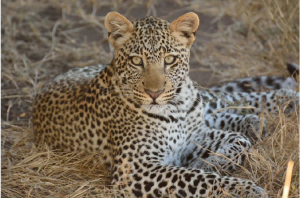
7 DAYS: NAIROBI/SAMBURU / NAKURU / MARA
07 DAYS: NAIROBI/SAMBURU / NAKURU / MARA Full Board Tour Guide 4×4 Truck Flexible Date Overview itinerary Information Map Overview itinerary DAY 01: NAIROBI Arrive
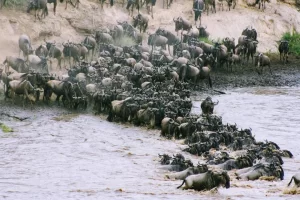
6 DAYS: NAIROBI/MARA
06 DAYS: NAIROBI/MARA Full Board Tour Guide 4×4 Truck Flexible Date Overview itinerary Information Map Overview itinerary DAY 01 – DAY 02: NAIROBI Pick up
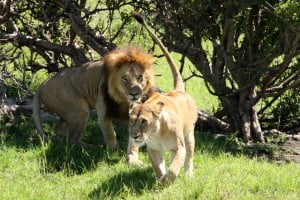
9 DAYS: NAIROBI/LAIKIPIA/SAMBURU/MARA
09 DAYS: NAIROBI/LAIKIPIA/SAMBURU/MARA Full Board Tour Guide 4×4 Truck Flexible Date Overview itinerary Information Map Overview itinerary DAY 01: NAIROBI Pick up at the airport

6 DAYS: ARUSHA/ SERENGETI/NGORONGORO/TARANGIRE
06 DAYS: ARUSHA/ SERENGETI/NGORONGORO/TARANGIRE Full Board Tour Guide 4×4 Truck Flexible Date Overview itinerary Information Map Overview itinerary DAY 01: ARUSHAArrival at Kilimanjaro International Airport,

9 DAYS: NAIROBI/LAIKIPIA/NAIVASHA/MARA
09 DAYS: NAIROBI/LAIKIPIA/NAIVASHA/MARA Full Board Tour Guide 4×4 Truck Flexible Date Overview itinerary Information Map Overview itinerary DAY 01: NAIROBI Arrival at Jomo Kenyatta International
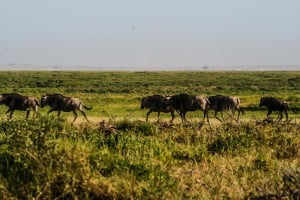
7 DAYS: ARUSHA/MANYARA/SERENGETI/NGORONGORO
07 DAYS: ARUSHA/MANYARA/SERENGETI/NGORONGORO Full Board Tour Guide 4×4 Truck Flexible Date Overview itinerary Information Map Overview itinerary DAY 01: ARUSHAArrival at Kilimanjaro International Airport, go


